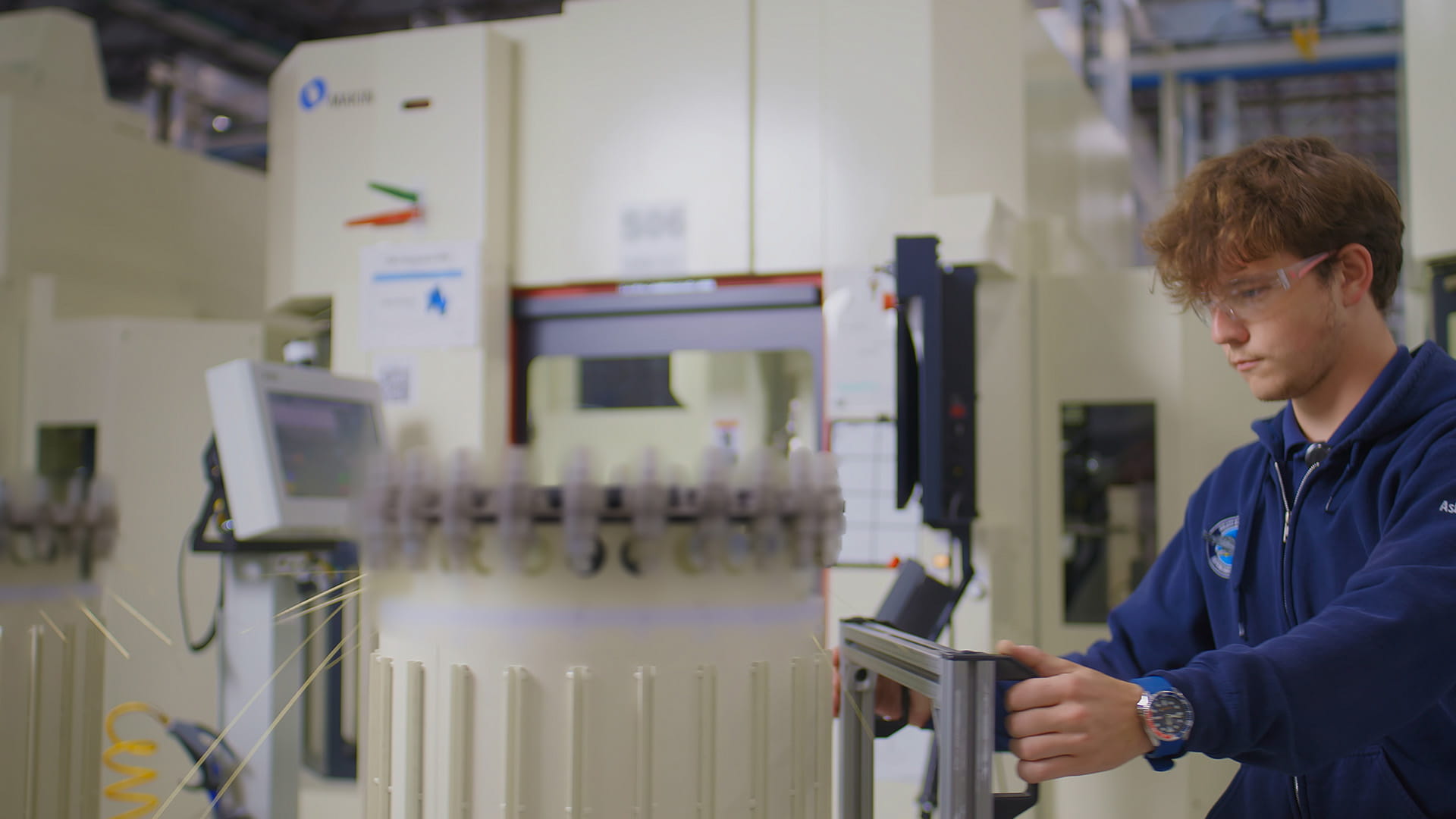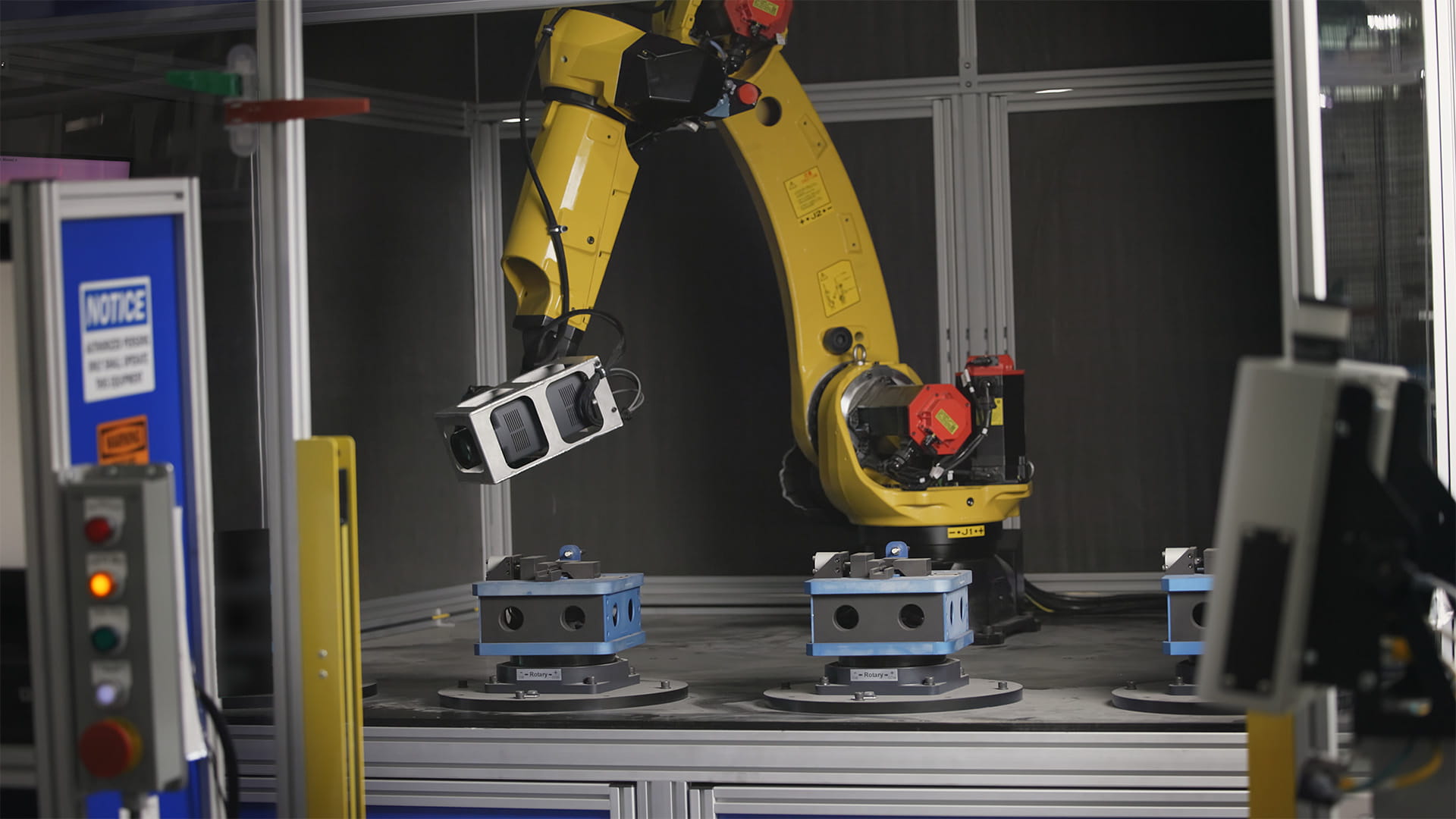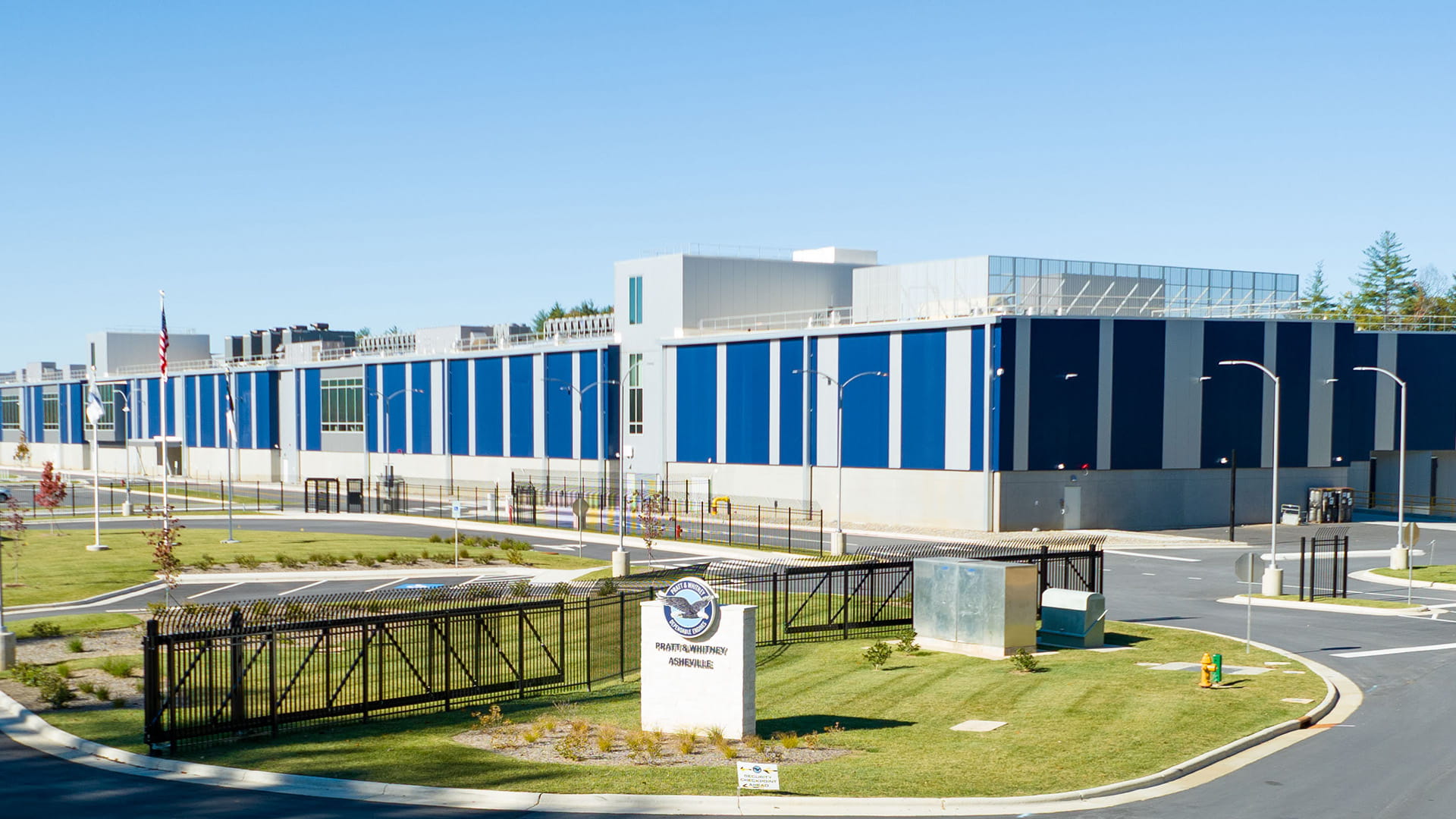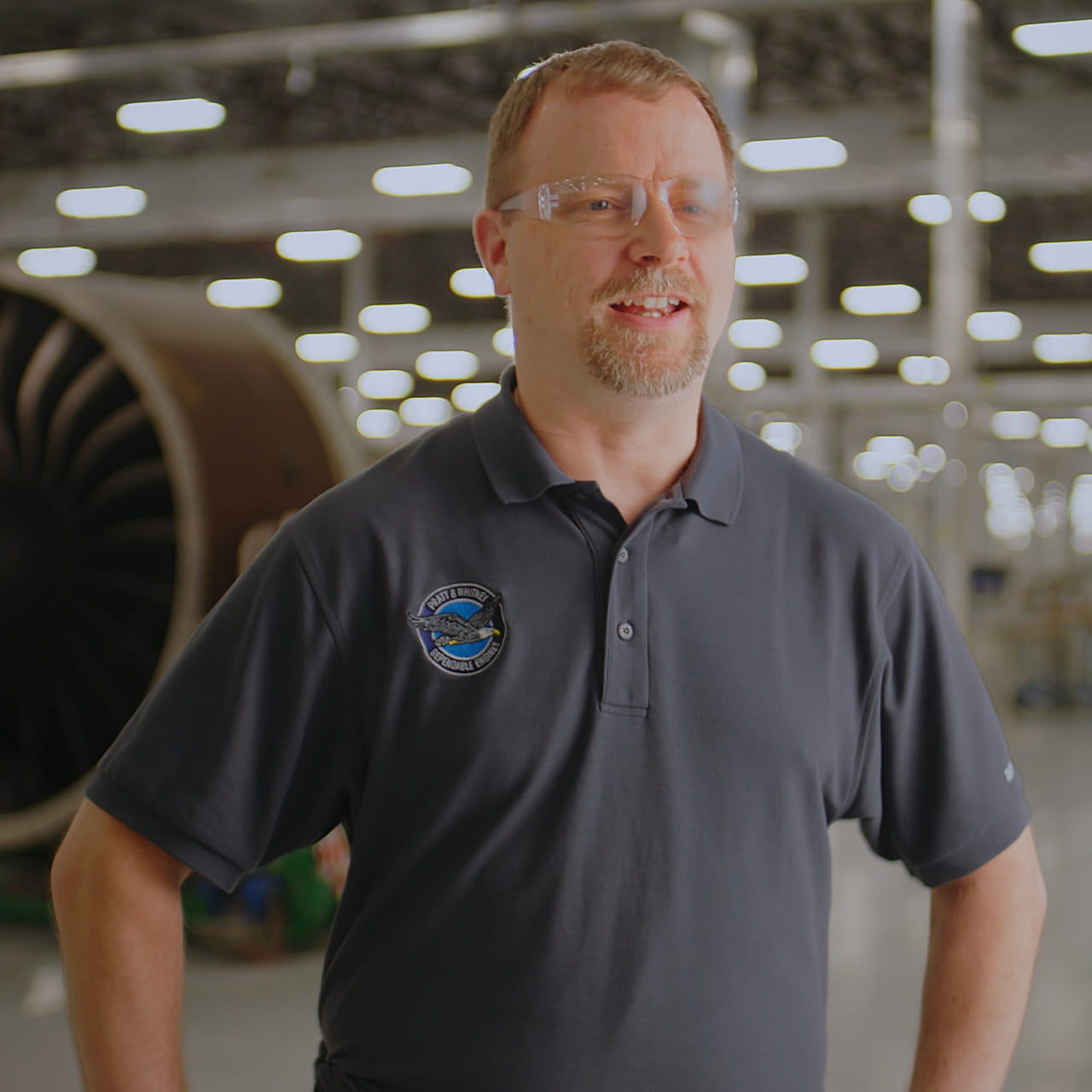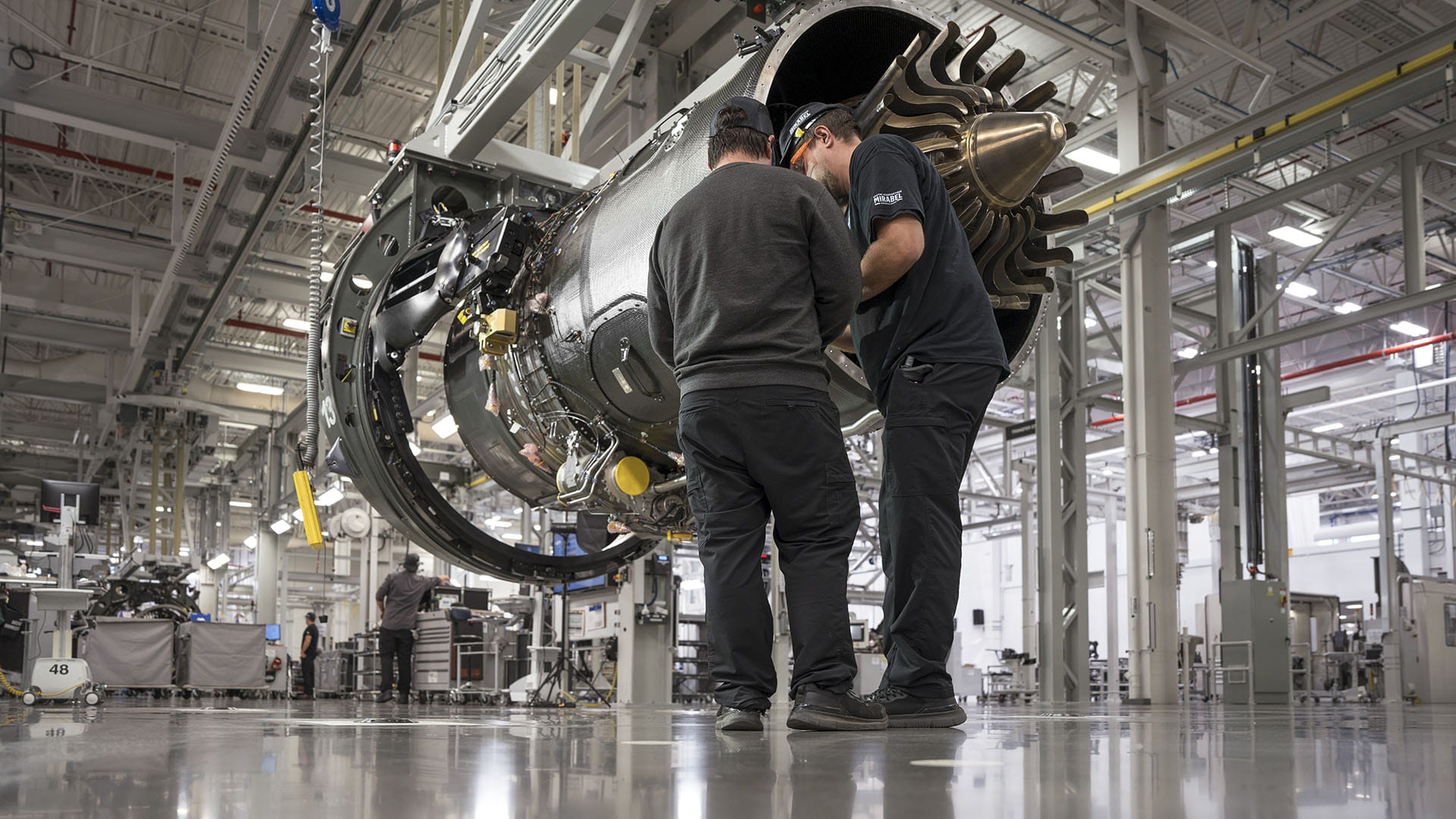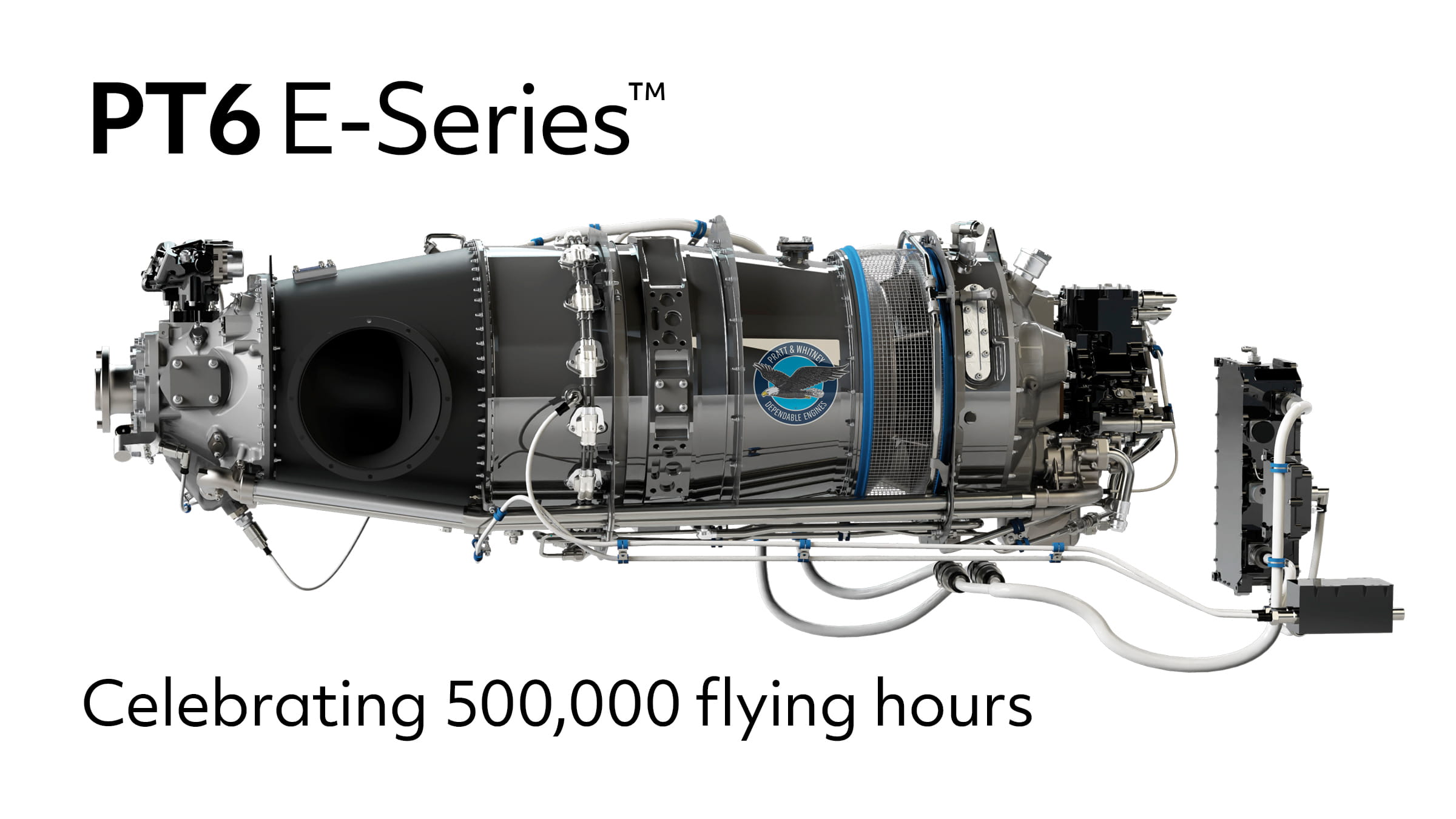Making a more durable GTF engine
With improved manufacturing and lessons from a new variant, Pratt & Whitney plans to double time on-wing
There is, however, a chamber.
Inside, a piece of metal rests on a platform and faces a tall metallic cylinder outfitted with tubes of varying widths. Water rushes in, and an electric charge begins passing through the tubes, machining a series of precisely plotted holes into the metal.
That metal will one day become a turbine blade in a Pratt & Whitney GTF™ engine, and the holes being bored into it will help keep that engine’s turbine cool. The drilling process, with its meticulous detail, is among several capabilities Pratt & Whitney, an RTX business, is using to boost the engine’s durability – a key concern for the airlines who look to the GTF engine and Pratt & Whitney GTF Advantage™ variant to power their fleets.
“With the GTF Advantage engine, we have the most state-of-the-art hot section in the single-aisle marketplace,” said Amy Comer, vice president of GTF programs at Pratt & Whitney. “The hottest part of the engine is hot enough to melt rock into lava. By optimizing cooling holes – their shape, size and location – we’re optimizing airflow over the surface of the parts. This, in turn, more effectively protects the surface of the parts to help them last significantly longer in service.”
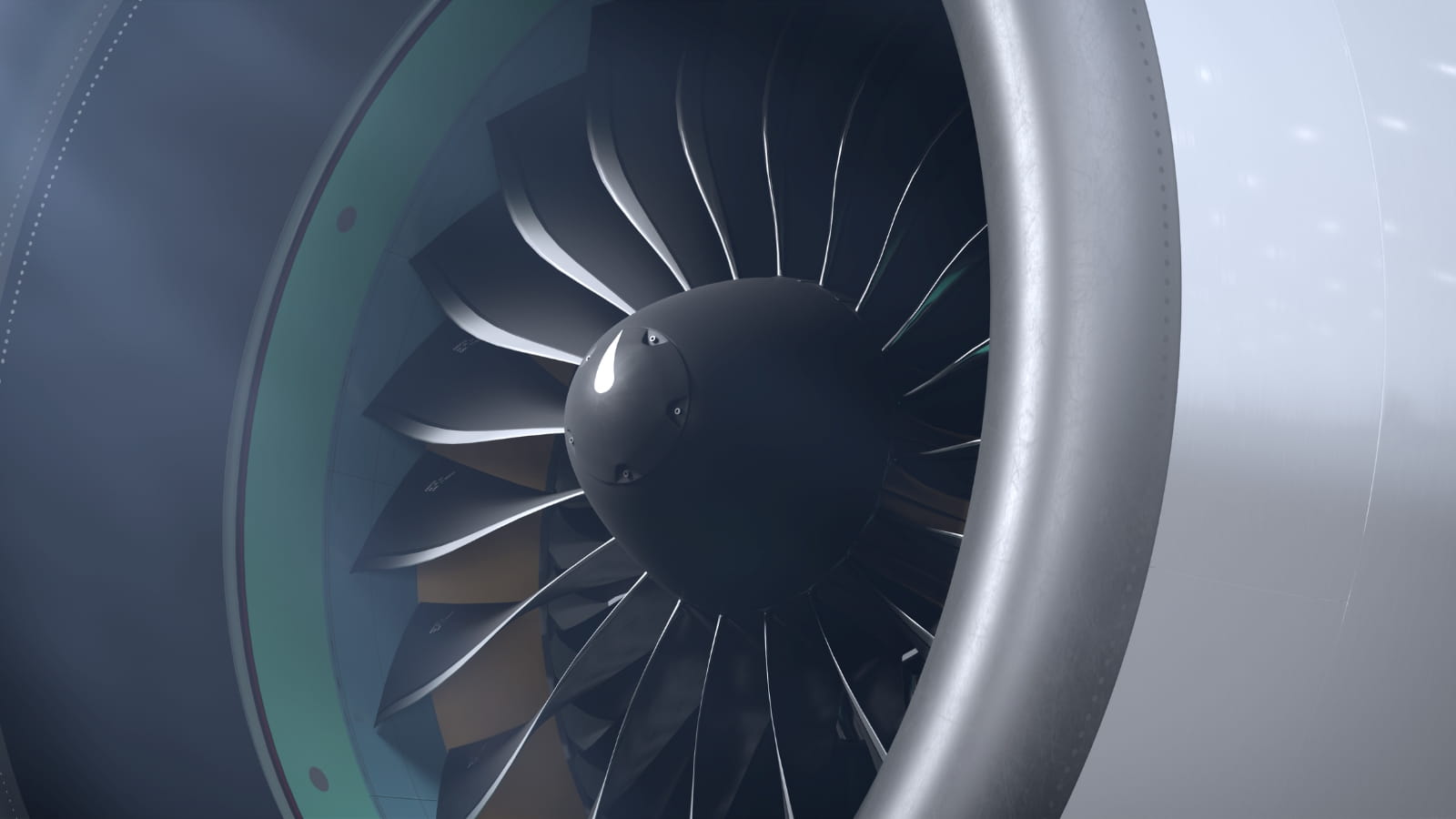
Hot Section Plus: Engine upgrade will nearly double time on-wing
Read our announcement about Hot Section Plus at the Paris Air Show.

An operator from the Pratt & Whitney blade-and-vane manufacturing plant in Asheville, N.C., walks across the section of the site called Hole Drill to check the status of a part. The highly automated process makes it possible for one or two people to manage operations for multiple machines. Portions of this image have been blurred to protect sensitive information.
A simple process in name only
Much of the work to improve the hot section – including the hole-drilling process – takes place at Pratt’s 1.2 million-square-foot blade-and-vane plant in Asheville, North Carolina. Opened in 2022, the site represents a $1 billion investment in the future of Pratt’s commercial and military engine operations, as well as a significant commitment to economic development in the region.
Down the aisle from Hole Drill are workstations informally referred to as the “Coatings” section – another plainspoken label that describes an advanced workflow.
And like Hole Drill, this process doesn’t look like it sounds. An operator places a formed part into a rotating box that resembles a futuristic treasure chest, where the part will be treated with special coatings to maximize its ability to resist heat.
The advanced drilling and coating techniques, exotic as they seem, are quite practical in purpose: They are directly helping Pratt make a more durable GTF engine – both today’s engine and the GTF Advantage engine that will soon become the production standard.
Gallery
A decade of engine insight
The changes derive from lessons learned over nearly 10 years and 40 million hours of in-service operations for Pratt’s GTF engine family, as well as 100,000 hours of rig, ground and on-wing performance testing.
And, if the base engine paved the way for innovation on the GTF Advantage engine, the Advantage is returning the favor. Existing GTF engine customers will receive an interim upgrade at their next maintenance visit – and, starting in 2026, will have the option for a new hot section that derives largely from the GTF Advantage engine.
“We can capture 90 to 95 percent of the durability improvements of the GTF Advantage with about 35 parts,” said Comer. “A relatively small number of parts can make a very big impact on how long the engine stays on-wing.”
What’s driving durability?
Durability in high demand
The durability improvements are coming as demand for the engine continues to ramp up. In early 2025, the GTF Advantage engine received type certification from the U.S. Federal Aviation Administration, and the European Union Aviation Safety Agency certified the GTF engine to power the Airbus A321XLR.
The certifications clear the way for Pratt to maintain its position as a leader in the single-aisle sector, and the company is staying ready by increasing its global network of engine maintenance, repair and overhaul centers. As of 2025, there are 17 Pratt & Whitney engine centers performing GTF engine maintenance, with three more centers expected in the coming years.
Pratt leaders, pointing to the company reaching its centennial milestone in 2025, see the ongoing investment in the GTF engine family as part of its legacy of innovating for customers.
Beyond blades and vanes
To walk the production line in Asheville, it would be easy to get caught up in small things – small holes, being drilled into small parts, in a small corner of an enormous facility.
But the people who work that line don’t see it that way; they understand that what they do is going to help airlines keep their engines on-wing longer and have big implications for the future of flight.
“It’s going to make commercial travel better,” said Glenn Barnes, business unit leader for the Hole Drill process area. “And it’s really being able to own that and say, ‘Hey, next time I fly, I know I’m safe because we take so much pride in the quality and durability of our parts.’”
A timeline for durability enhancements
Throughout 2025:
Interim upgrades to GTF engine ongoing at Pratt & Whitney MRO locations
- 5 parts involved
- Extends engine’s maintenance interval by up to 40%
2026:
First GTF Advantage engines enter into service
New hot section based on the GTF Advantage engine available for GTF engine
- 35 parts involved
- 90-95% durability improvement
Early 2028:
Switchover to full GTF Advantage engine production expected

Pratt & Whitney GTF™ engine
- FAA certification in 2014
- Powering more than 2,300 aircraft delivered
- 85+ global customers
- Up to 20% reduction in fuel consumption
- 75% smaller noise footprint
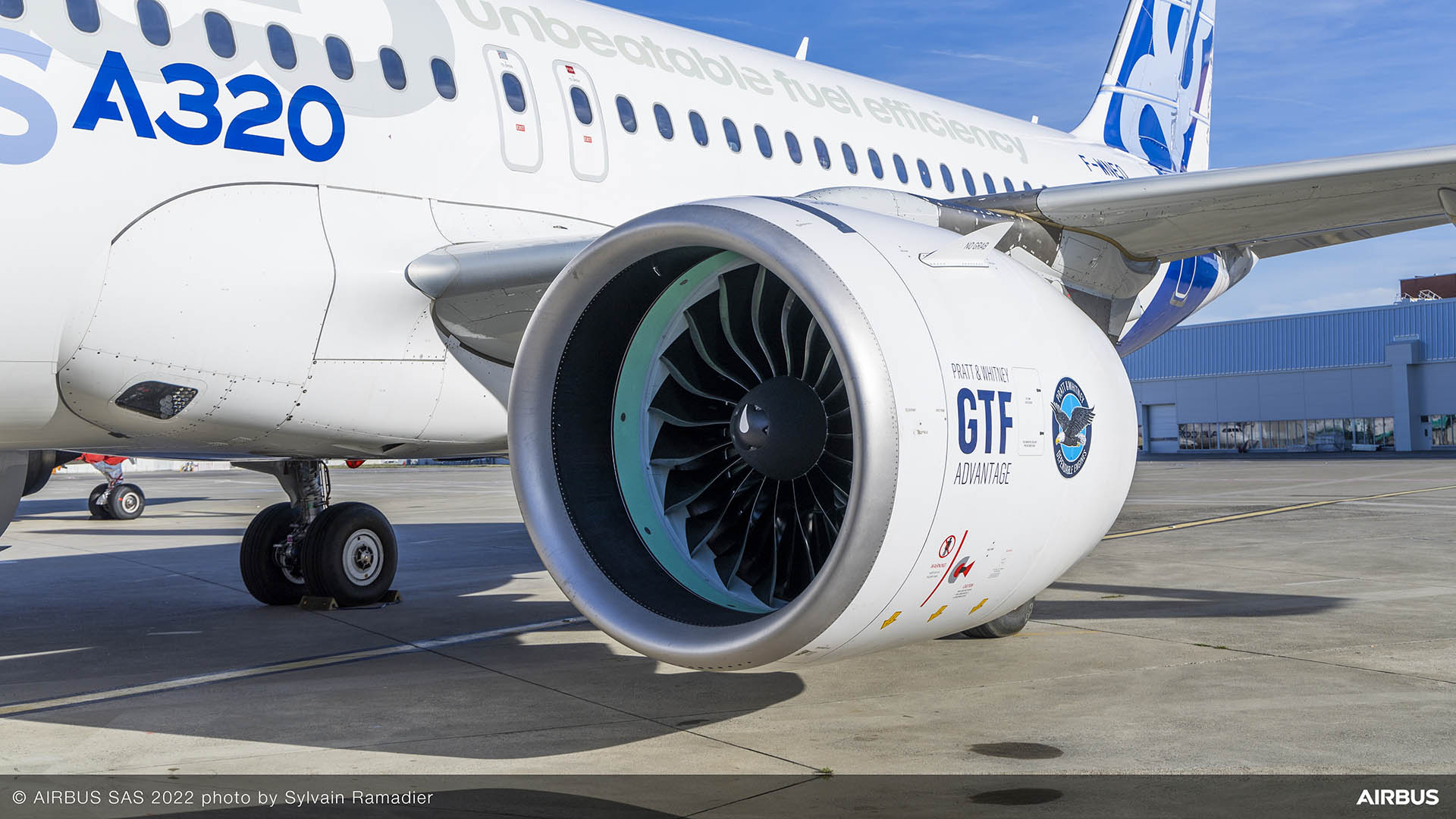
Pratt & Whitney GTF Advantage™ engine
- FAA certification in 2025
- 4-8% more takeoff thrust
- Better fuel efficiency
- 2x time on-wing
- Ideally suited for Airbus A321XLR

